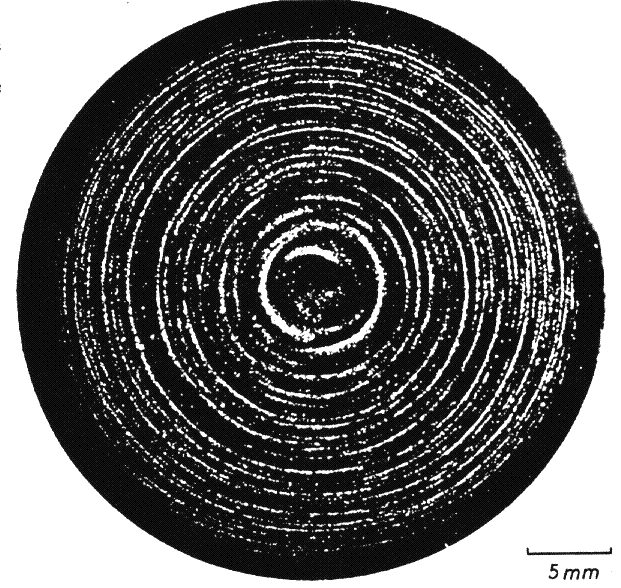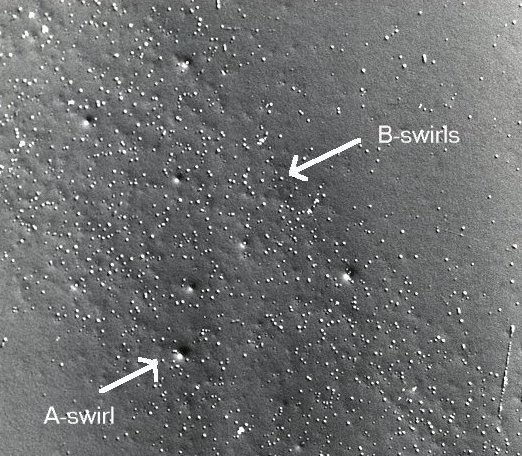 |
Swirl defects were discovered in the seventies in large dislocation-free Si crystals grown
for micro electronic applications. They occur in two variants, the so-called A-swirl and B-swirl defects.
The following picture shows a photography of a Si wafer that was preferentially etched to delineate the defects obtained
by illuminating from the side (so that only light scattered at the defects enters the lens of the camera). |
|
 |
The typical spiral or swirl-like pattern explains the name of the defects. |
| |
|
|
 |
Looking at the etch pattern with a microscope at high magnifications shows that there are a lot of small defects (the
B-swirls; white dots) and a much smaller number of larger defects (A-swirls; the black-white contrasts). Quantitative
evaluation of the micrograph shows that the B-swirls are delineated as small and shallow pits whereas the A-swirls
are delineated as hillocks. |
|
|
|
 |
Swirl defects are generated by the agglomeration of point defects while the crystals
cools. The Si crystal growing industry soon learned how to grow crystals without swirl defects - without ever understanding
precisely what they were. |
|
 |
But that did not mean that the crystals were defect free - it only meant that the methods
employed then did not detect what was there. With new methods, defects reappeared, now called D-defects and bother the chip
industry. |
|
 |
More about swirls can be found in a original
research paper (in German) in the link. |
|
| |
© H. Föll (Defects - Script)


![]() 1.3.3 The larger View and Complications
1.3.3 The larger View and Complications ![]() 6.1.1 Observation of Dislocations and Other Defects
6.1.1 Observation of Dislocations and Other Defects ![]() Etch Pattern of Swirl Defects in Silicon
Etch Pattern of Swirl Defects in Silicon